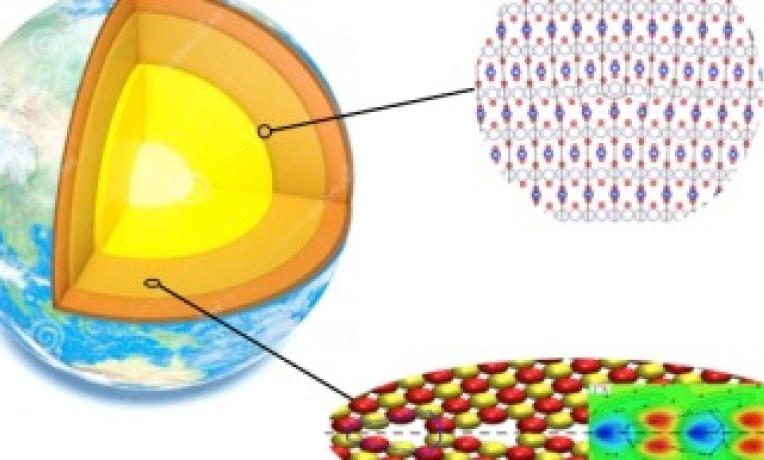Minerals reveal the flow patterns inside the Earth
The Earth is made of layers, just like a big onion, composed of different materials. However, the compounds forming these layers are not static, flowing from one stratum to another, following patterns still not entirely understood. Prof. Patrick Cordier tries to model the real conditions minerals are subjected to beneath the Earth’s crust. His aim is to understand the forces driving tectonic plates so we can better comprehend phenomena like earthquakes and volcanic eruptions.

Understanding the inside of our planet is not an easy task: a whole discipline, rheology, is dedicated to the study of the flows inside the Earth, which stir the solid rocks of the mantle to dissipate the Earth’s internal heat. Funded by the ERC, Prof. Cordier and his team apply a novel approach to materials science, called multiscale modelling, to shed new light on these mechanisms. This technique consists in accurately describing the forces which operate at the atomic scale under the high pressures of the deep Earth. Prof. Cordier’s team wants to understand how small defects in the rocks have an impact on the flow of materials.
Prof. Cordier is modelling minerals like wadsleyite, ringwoodite, silicate perovskite and post-perovskite, which are found in their stable state at great depths only, to find the viscosity profile of the lower mantle (around 670 to 2900 km below the Earth’s surface) and its differences with the transition zone to the upper mantle (410-670 km deep). Additionally, he aims to understand how rocks flow at the core-mantle boundary – the very last layer before the Earth's inner metallic core, 2 900 km under our feet.
Started in 2012, the RHEOMAN project has generated promising advances: it has proposed a new mechanism for explaining how deformations occur on olivine-based rocks, the most abundant materials in the Earth's upper mantle. Prof. Cordier’s team is looking into how these defects, named disclinations, affect the mobility of materials in all the phases of the mantle. Their observations could lead to a whole new understanding of the rheology of planetary interiors.


